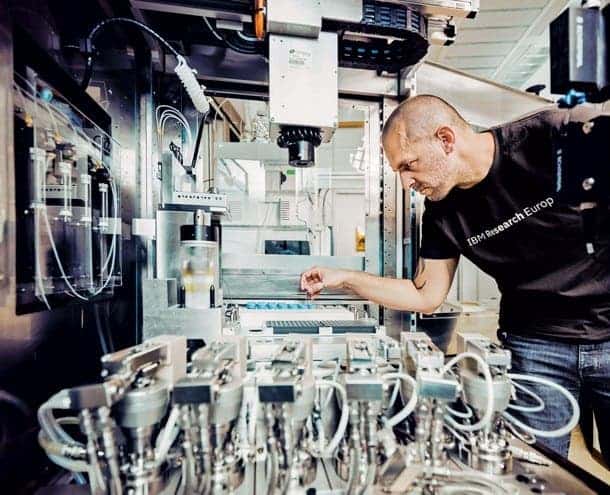You may have heard that artificial intelligence-based systems will eventually replace jobs involving routine tasks, from bank tellers and retail salespersons to truck drivers and couriers. But the disruption of the labor market will likely be much broader, and may even involve jobs that we generally wouldn’t consider replaceable by machines — even those of researchers in the lab.
Case in point, there are now numerous projects led by academics and major drug companies showcasing how robotics and artificial intelligence can come together to revolutionize research.

Reporting in the journal Science Advances, a team led by Alán Aspuru-Guzik, a professor of chemistry and computer science at the University of Toronto, described a completely automated research laboratory where an AI controls the synthesis of thin-film materials. The algorithms are completely in charge of identifying, synthesizing, and validating novel molecules. While doing so, the AI is constantly producing and reprocessing data, which it then uses to refine its chemical synthesis process.
Another project from the University of Liverpool demonstrated an automated lab that performed 700 experiments over 8 days by itself during which it optimized a photocatalytic process for generating hydrogen from water.
Similar to a factory or Amazon warehouse robot, this robo-researcher uses specialized grippers to handle samples in liquid and solid chemical dispensers. The robot can also operate a gas chromatograph, as well as other lab instruments such as those from Excedr.
After adjusting the concentrations of 10 chemicals using artificial intelligence, this ingenious mechanical researcher arrived at a mixture that produced 6 times more hydrogen than the starting conditions produced.
It took the robot 8 days to perform optimization work that could have taken a year of practical, very tedious work. The researchers at the University of Liverpool estimate that their robot is 1,000 times faster than a human researcher.
At IBM Zurich, researchers launched RoboRXN, a fully automated synthesis system that builds upon IBM RXN for Chemistry, a free cloud-based software that predicts the result of chemical reactions. By combining computational power with hardware, RoboRXN is basically a robot that executes synthesis and other chemical processes typically reserved for lab technicians and qualified researchers.
In many ways, these automated labs are like self-driving cars in the sense that human control of a complex machine that has to undergo complicated maneuvers has been replaced by an AI.
Of course, these automated labs are by no means perfect. But while they still need a lot of work, some may be already suitable for niche applications. One obvious example is for material synthesis for rapid prototyping, be it for new photovoltaic cells or the aerospace industry.
It is likely that lab automation market will reach more than US$ 16 billion by the year 2022, with the U.S., followed by Europe and Japan, seen as the largest markets.
That’s not to say that humans will be out of the picture — far from it. Every lab will still need a human researcher to set the big-picture goal. Imagination and creativity will remain in the human domain for a very long time to come, so if you plan on staying relevant in the future, your best bet is to double down on these qualities.









